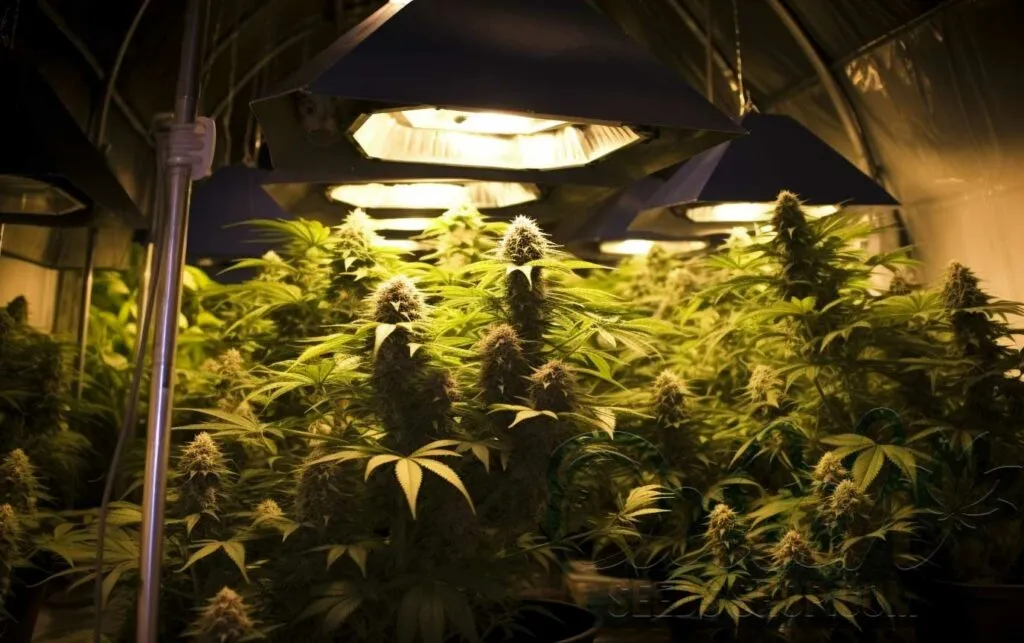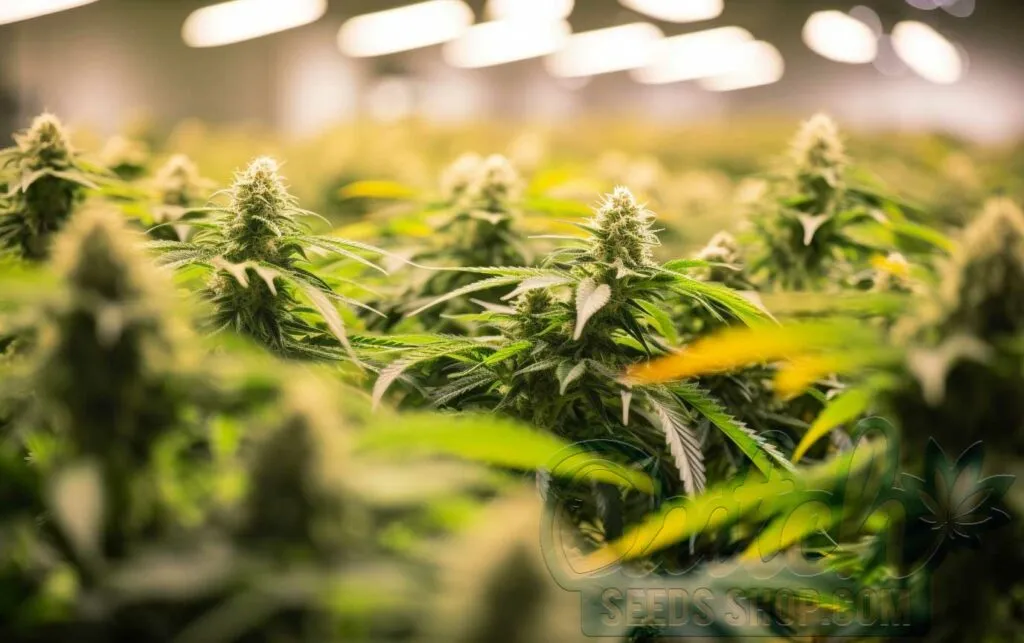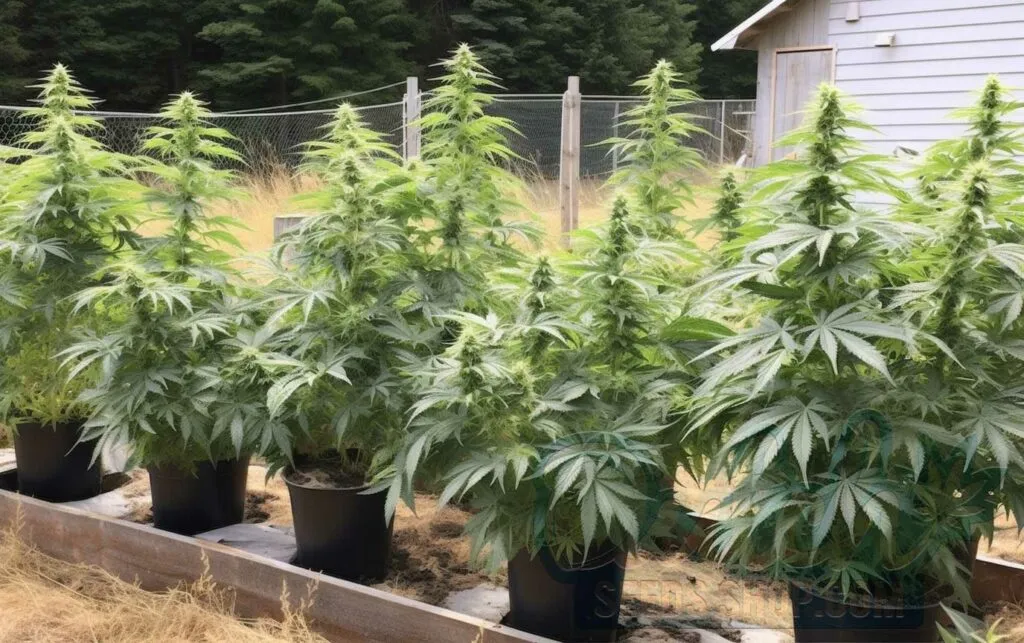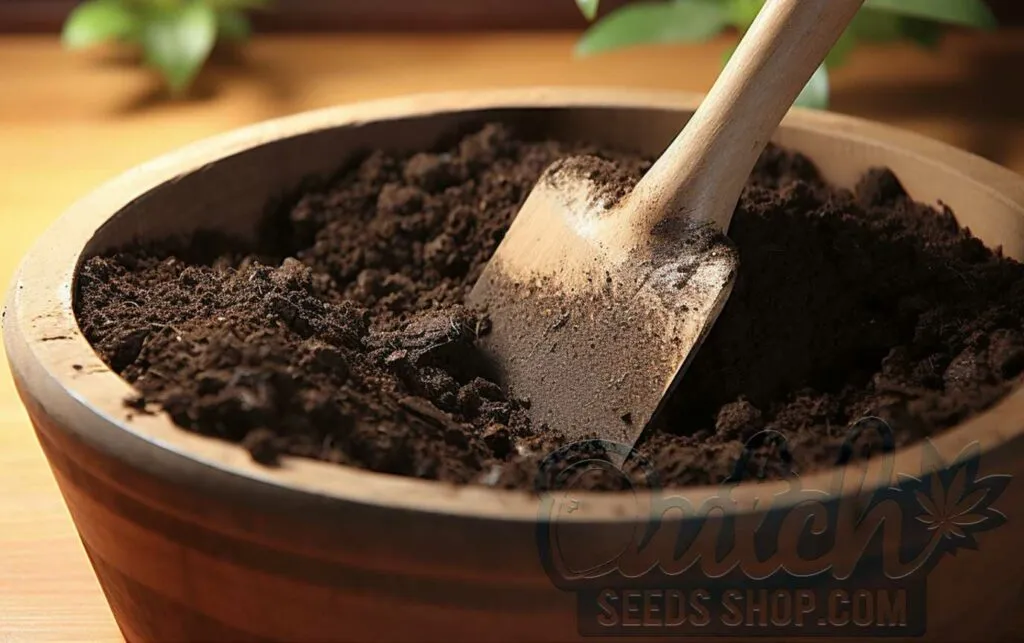How to Grow Hawaiian Snow Strain
Growing Hawaiian Snow, a sativa-dominant hybrid known for its uplifting effects and tropical flavors, is both a challenging and rewarding endeavor. This guide dives into the essentials of cultivating this unique strain, offering insights for both novice and experienced growers.

Get To Know Hawaiian Snow Strain
Hawaiian Snow, a cross between Haze and Hawaiian Haze, boasts a 90% sativa and 10% indica lineage.
It’s recognized for its high THC levels ranging from 16% to 19% and minimal CBD content below 1%.
This strain has gained popularity for its invigorating effects and its efficacy in pain therapy and depression management.
It’s a tall plant with a moderate growing difficulty, requiring a warm climate.
The flowering time spans 70 to 84 days, yielding 1.5 to 2 oz/ft² indoors and 18 to 25 oz per plant outdoors.
Its flavors are a delightful mix of tropical, sweet, and pineapple.
| Aspect | Detail |
| Lineage | Haze, Hawaiian Haze |
| THC/CBD Content | 16-19% THC, <1% CBD |
| Flavors | Tropical, Sweet, Pineapple |
| Effects | Happy, Uplifted, Energetic |
| Grow Difficulty | Moderate |
| Flowering Time | 70-84 days |
| Yield | 1.5-2 oz/ft² (Indoor), 18-25 oz/plant (Outdoor) |
Tips and Tricks for Growing Hawaiian Snow Successfully
To successfully grow Hawaiian Snow, consider the following tips:
- Climate: Prefers a warm, sunny environment.
- Space: Needs ample room due to its tall and wide growth.
- Training: Ideal for Low-Stress Training (LST); requires support for heavy flowers.
- Skill Level: Best suited for growers with intermediate experience.
- Seeds vs. Clones : Choose feminized seeds or healthy clones.
- Accessories: Invest in quality cultivation tools and equipment.
Hawaiian Snow Indoor Growing
Growing Hawaiian Snow indoors is a rewarding experience that combines the complexities of cannabis cultivation with the unique characteristics of this sativa-dominant strain.
This section delves into the nuances of indoor growing, revealing the optimal ways to nurture Hawaiian Snow to its fullest potential.
Benefits of Indoor Growing

Indoor cultivation offers significant advantages, particularly for Hawaiian Snow.
The controlled environment allows for precision in growth management, leading to high-quality weed with potent flavors and effects.
Indoor growers can manipulate temperature, humidity, and light, ensuring that Hawaiian Snow develops under ideal conditions.
This control also facilitates multiple harvests year-round, unimpeded by external weather conditions.
Furthermore, growing indoors enhances privacy and security, a crucial aspect for cultivators in areas with stringent cannabis regulations.
- Adaptability to control environmental factors
- High-quality weed production
- Multiple harvests throughout the year
- Enhanced privacy and security
Setting Up Your Indoor Grow Space
Creating the perfect indoor grow space for Hawaiian Snow requires careful planning.
Choose a dedicated space like a closet, tent, or spare room, taking into account the plant’s tall stature.
Proper ventilation is essential to control odor and maintain air quality.
When considering grow lights, balance between cost, efficiency, and the specific needs of Hawaiian Snow.
Managing costs is also crucial, especially for beginners, to ensure a sustainable cultivation journey.
- Choose a dedicated space for your plants.
- Ensure proper ventilation to control odor and air quality.
- Consider various grow light options for optimal plant growth.
- Start small to manage costs and gradually expand.
Climate Control
For Hawaiian Snow, maintaining an optimal indoor climate is crucial.
Temperature, humidity, and light intensity must be carefully monitored and adjusted.
Use environmental controllers for automation, ensuring consistent conditions.
Air-cooled reflector hoods are recommended for HID lights to manage heat, while oscillating fans enhance air circulation.
These devices help create a stable environment conducive to the vigorous growth of Hawaiian Snow.
Types of Lights

The choice of grow lights significantly impacts Hawaiian Snow’s development.
HID (High-Intensity Discharge) lights, like MH (Metal Halide) for vegetative growth and HPS (High-Pressure Sodium) for flowering, are popular choices.
Fluorescent lights are suitable for smaller setups, while LEDs offer energy efficiency and a full light spectrum.
The light spectrum optimization is crucial for Hawaiian Snow to ensure healthy growth and potent yields.
- HID lights for different growth stages
- Fluorescent lights for small-scale setups
- LED lights for energy efficiency and full spectrum
Growing Mediums and Containers
When growing Hawaiian Snow indoors, the choice of medium and containers plays a pivotal role.
Soil is traditional and forgiving, ideal for beginners, while hydroponics offers advanced control over nutrients for experienced growers.
Containers impact plant health, with fabric pots promoting better airflow and root health.
Proper drainage is essential to prevent root rot, ensuring Hawaiian Snow thrives in its indoor environment.
Caring for Indoor-Grown Hawaiian Snow
Caring for Hawaiian Snow involves a routine that addresses its unique needs.
Watering should be regular, using clean, pH-balanced water.
Nutrient management is crucial, with specific solutions catering to different growth stages.
Pruning helps in managing the plant’s size and shape, promoting better yields.
Stay vigilant for signs of pests or diseases, which can be detrimental if not addressed promptly.
Odor Control
Controlling odor is a significant aspect of indoor Hawaiian Snow cultivation.
Activated carbon filters effectively remove the strong aroma, while exhaust and intake fans maintain air quality.
Odor-absorbing gels can also be used as an additional measure to mask the smell, ensuring a discreet growing operation.
Hawaiian Snow Outdoor Growing
Outdoor cultivation of Hawaiian Snow offers a unique set of benefits and challenges.
It’s a journey that combines the art of gardening with the science of cannabis cultivation.
This section explores the key aspects of growing Hawaiian Snow in an outdoor setting, from the advantages it presents to the specific needs of the strain in various environments.
Benefits of Outdoor Growing
Growing Hawaiian Snow outdoors has several distinct advantages.
Cost-effectiveness is a major benefit, as natural sunlight reduces the need for expensive lighting setups.

This strain thrives in natural conditions, often yielding larger plants with more bountiful harvests.
The environmental sustainability of using natural resources like sunlight and wind is another significant advantage.
Additionally, gardening is known to have therapeutic benefits, adding a layer of personal satisfaction to the cultivation process.
| Advantage | Detail |
| Cost-Effectiveness | Reduced need for artificial lighting and climate control systems. |
| Larger Yields | Natural conditions often lead to larger, more robust plants. |
| Sustainability | Utilizes natural resources, minimizing environmental impact. |
| Therapeutic | Gardening offers mental and physical health benefits. |
Best Time to Plant Hawaiian Snow Outdoors
The ideal time to plant Hawaiian Snow outdoors varies by region.
In the Northern hemisphere, April or May is typically the best time, after the last frost.
Starting Hawaiian Snow seeds indoors and transplanting seedlings outside when they’re strong enough is a common practice.
This approach allows the plants to establish themselves in controlled conditions before facing the outdoor environment.
Setting Up Outdoor Grow Spaces
Setting up an outdoor grow space for Hawaiian Snow requires careful consideration of several factors.
Understanding the local climate is crucial, as extreme weather can adversely affect the plants.
Ensuring that Hawaiian Snow receives at least six hours of direct sunlight daily is essential for healthy growth.
Protection from wind and ensuring privacy and security are also important considerations.
- Understand your local climate and weather patterns.
- Ensure sufficient daily sunlight exposure for your plants.
- Protect plants from excessive wind and ensure privacy.
- Choose the right type of outdoor space (garden plot, balcony, rooftop).
Selecting and Preparing Soil

Soil selection and preparation are critical steps in growing Hawaiian Snow outdoors.
The soil should be rich in organic matter, well-draining, and pH-balanced.
Conducting a soil test to understand its composition is recommended.
Amending the soil based on test results ensures the best growing conditions.
Choosing the right soil and fertilizers, whether organic or a pre-fertilized “super-soil,” can significantly impact the health and yield of the plants.
Nutrients and Fertilizers
The right balance of nutrients and fertilizers is essential for the healthy growth of Hawaiian Snow.
Nitrogen, phosphorus, and potassium are key nutrients that the plant requires throughout its life cycle.
The choice between organic and synthetic fertilizers can influence not only plant health but also the quality of the buds.
- Importance of nitrogen, phosphorus, and potassium
- Organic vs. synthetic fertilizer options
- Irrigation and nutrient scheduling for optimal growth
How to Maximize Hawaiian Snow Yield
Maximizing the yield of Hawaiian Snow strain, whether grown indoors or outdoors, involves advanced cultivation techniques.
Training methods like Low-Stress Training (LST) or High-Stress Training (HST) can significantly impact plant health and yield.
Factors like CO2 enrichment and optimal light intensity play a crucial role in maximizing the potential of the plants, leading to a more bountiful and potent harvest.
Growing Hawaiian Snow is a journey that combines the art of gardening with the science of cannabis cultivation.
It’s a rewarding endeavor, offering both challenges and significant benefits.
The intricacies of growing Hawaiian Snow, from selecting the right soil and nutrients to managing light and climate conditions, demand attention and skill.
However, the rewards are substantial.
Growers who master Hawaiian Snow cultivation are rewarded with bountiful yields of high-quality, potent buds, characterized by uplifting effects and tropical flavors.
This strain’s versatility in both indoor and outdoor settings adds to its appeal.
Whether you’re a novice or an experienced grower, the journey of cultivating Hawaiian Snow offers a unique opportunity to deepen your understanding of cannabis cultivation while enjoying the therapeutic and recreational benefits of this exceptional strain.
FAQ
Can Hawaiian Snow be grown in cooler climates?
Hawaiian Snow prefers warm climates, but with careful monitoring and control of environmental factors, it can be grown in cooler climates.
How often should Hawaiian Snow be watered outdoors?
Watering frequency for outdoor Hawaiian Snow depends on the climate and soil conditions.
What are the common pests that affect Hawaiian Snow, and how can they be managed?
Common pests include spider mites, aphids, and whiteflies.
Is Hawaiian Snow suitable for hydroponic systems?
Yes, Hawaiian Snow can be grown in hydroponic systems.
How long does it take for Hawaiian Snow to reach full maturity?
Hawaiian Snow typically takes around 70 to 84 days to flower.
About the Author
Share the Love:
